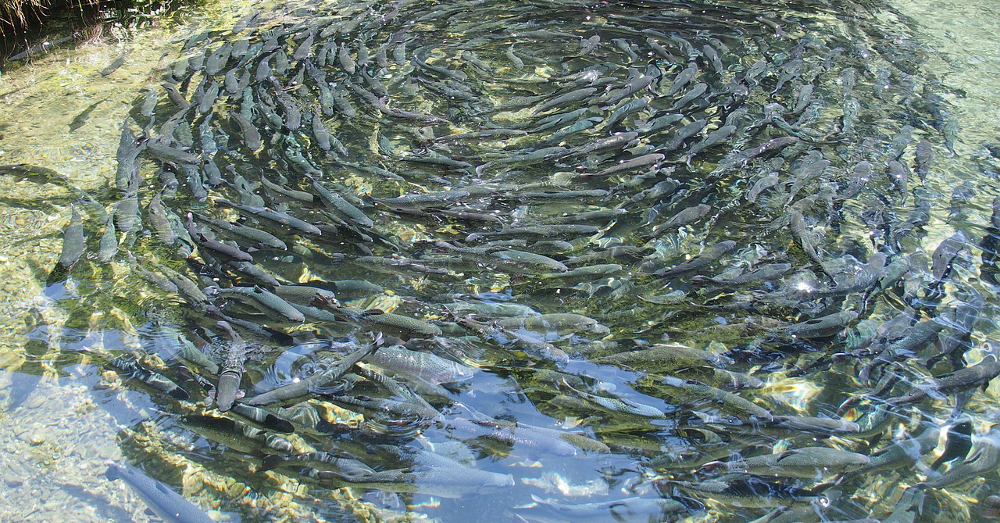
Replacing Farms With Fish Farms: The Odd Solution To Both Hunger And Climate Change
Imagine a world where polluting, resource-intensive cow, pig, and chicken farms are replaced with giant tanks of fast-growing salmon. It might be a strange view of agriculture, but a potential huge shift in how we feed the planet.
March 13, 2017 | Source: Fast Company | by Ben Paynter
Imagine a world where polluting, resource-intensive cow, pig, and chicken farms are replaced with giant tanks of fast-growing salmon. It might be a strange view of agriculture, but a potential huge shift in how we feed the planet.
It may be the dead of winter, and the nation’s capitol city may not be coastal, but this month marks the start of a distinct version of salmon season in and around Washington, D.C. Restaurants ranging from the iconic Chart House in Alexandria and Annapolis to all seven of critically-acclaimed Top Chef contestant Bryan Voltaggio’s eateries will be offering preparations of a different kind of locally-sourced fish on their menus.
Meanwhile, the grocery store Wegmans plans to roll out large ice tables adorned with signage that plays up the nearby heritage. “We’ll make them kind of an event,” says company seafood manager Steve Philips. “They almost always sell out.”
The catch: All of these fish will be coming from 70 miles inland of the capital, from a company called Spring Hill. The fish will be harvested from a land-based “recirculating aquaculture system,” the industry term for a gigantic eco-friendly, land-based fish tank located at the Conservation Fund’s Freshwater Institute in Shepherdstown, West Virginia.
THE FISH FARM OF THE FUTURE
The Institute is housed in a large warehouse surrounded by fields and pastures along an otherwise rural road. It holds a 40,000-gallon circular fish tank that resembles a large above ground swimming pool with portholes. Beside it are several large water filtering towers, which are designed to strip out residual waste like leftover food and fish poop to be treated and broken down into nitrogen and phosphorous rich fertilizer that settles in compost bins outside the building. Ninety-nine percent of the water is recycled.
